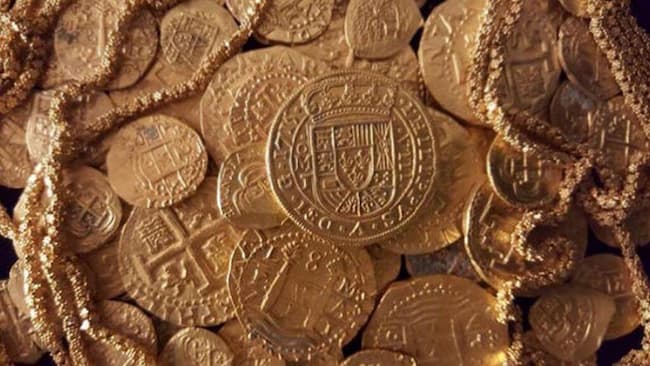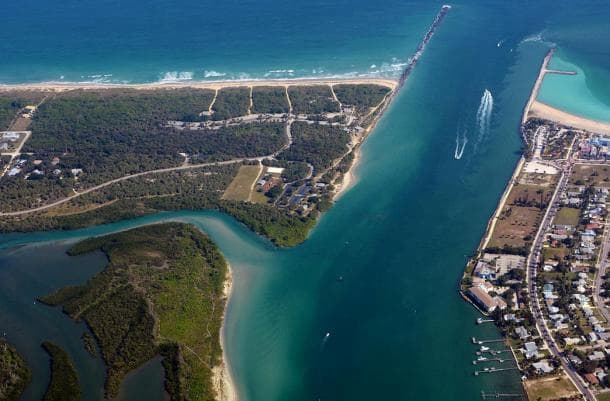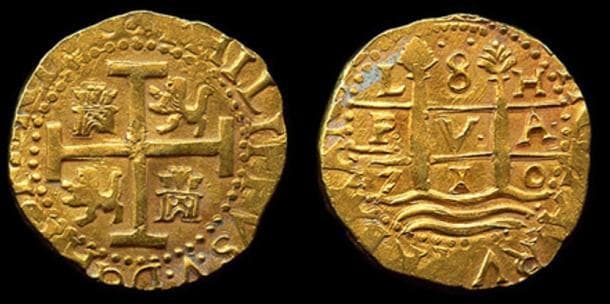Treasure hunters exploring the waters off the coast of Florida, USA, have discovered a hoard of long-forgotten treasure that has been lying on the seabed for at least 300 years. At a depth of about 15 feet beneath the surface, 1,000 feet (305 meters) offshore of Fort Pierce, Florida, Eric Schmitt’s metal detector picked something up. He was expecting it to be a beer can or something like that, but instead, it was something infinitely more valuable – a long-lost hoard of Spanish treasure.

Schmidt is the captain of a salvage vessel called the Arr Booty which was subcontracted by a company called 1715 Fleet Queen Jewels, LLC , owned by William Brisben and his son Brent. According to Brisben, talking to Live Science, the company owns salvage rights to five of the eleven ships lying on the sea bed. They were originally part of a fleet of 12 ships that sunk in the area in 1715 after being hit by a hurricane. Around 1,000 people died when the ships sank.

The cargo was being transported from Cuba, then a Spanish colony, back to Spain to refill the Spanish Treasury, exhausted after the long War of the Spanish Succession. The ships have been known as the “1715 Fleet” ever since.
The discovery is worth nearly $1 million dollars and consists of gold coins and gold chains and also includes an extremely rare Spanish coin called a “Tricentennial Royal”. This item was minted for King Philip V of Spain and was distinguished from other coins of the period, which are cruder, by its perfectly round shape, created when molten gold is poured into a mould. According to Brent Brisben, it is worth around $500,000 due to its rarity – only around six of the coins were ever made.

“These things were known as presentation pieces not meant to be circulated as currency,” Schmitt explained, speaking to The Orlando Sentinel.
Philip V held the Spanish throne from 1700 to 1746. In 1724, he abdicated briefly, being succeeded by his son, Louis. However, Louis died in September of that same year, forcing Philip to take the throne for a second term. Philip was a member of the House of Bourbons and inherited the condition known as melancholia from them.
At times it was even described as a form of madness, characterised by long periods of isolation, manic depression and a suspicious and fearful nature. Philip was placed on the Spanish throne by his grandfather, but this was contested by the Austrian Archduke Charles VI, resulting in the War of the Spanish Succession (1701 to 1714).
The 1715 Fleet was carrying so much treasure in order to fund the war that some of it still washes up on Florida beaches occasionally. One of the ships, the Urca de Lima, is protected by law for its archaeological value.

There may be a lot more treasure lying off the coast and it could be worth at least $440 million. It may include the Queen’s Jewels that once belonged to Elizabeth Farnese, Duchess of Parma and Philip V’s second wife.
These were not recorded in official documents of the time as jewels were not a taxable commodity, but Brisben believes that some of the jewels may have been on one of the ships when they sank, including a 74-carat emerald ring and 14-carat pearl earrings.
Last year, Schmidt found part of a handcrafted gold-filigree pyx, used to hold the Eucharist during a Holy Communion. The best finds are claimed by the state and are later exhibited in museums. The rest of the treasures are split between the Schmidts and Brisben’s company.

